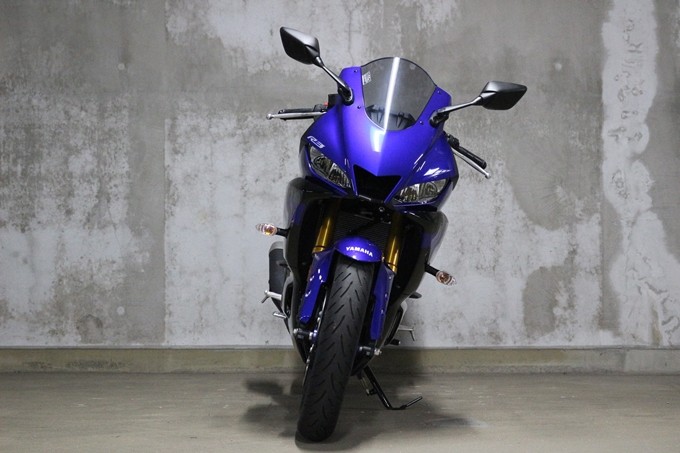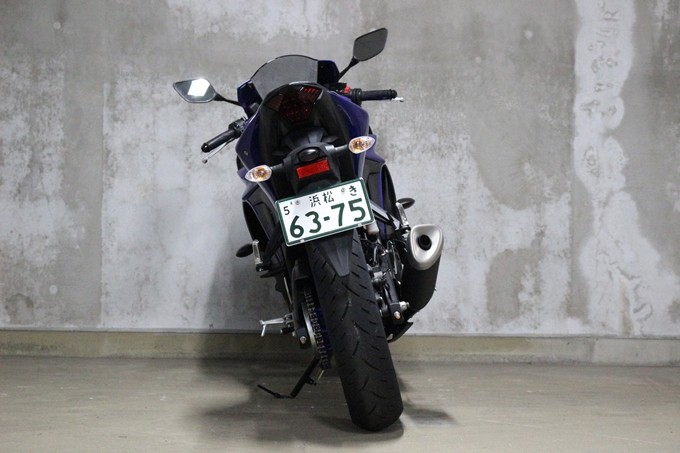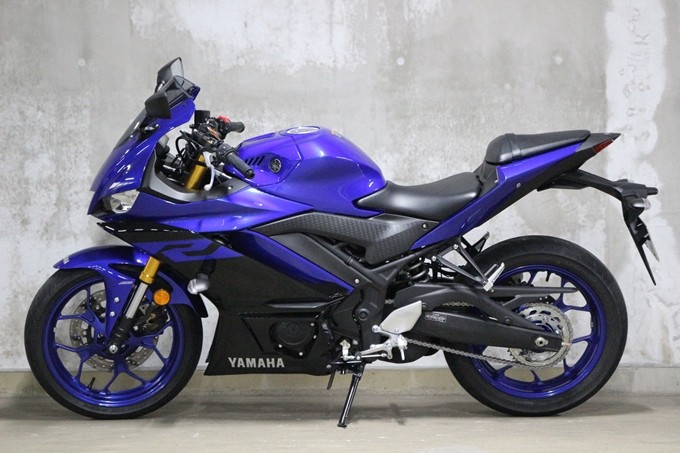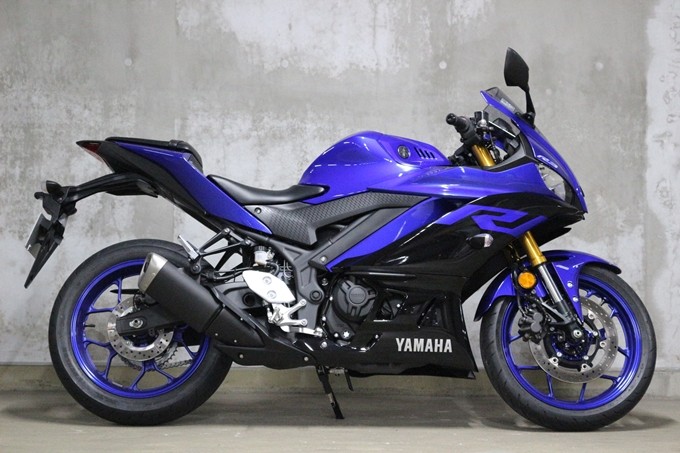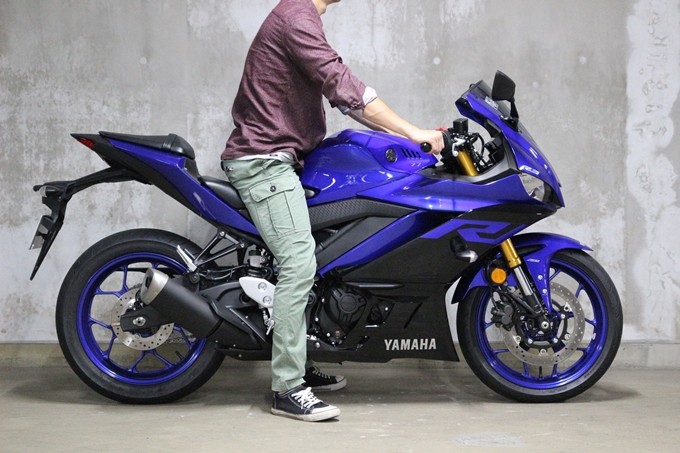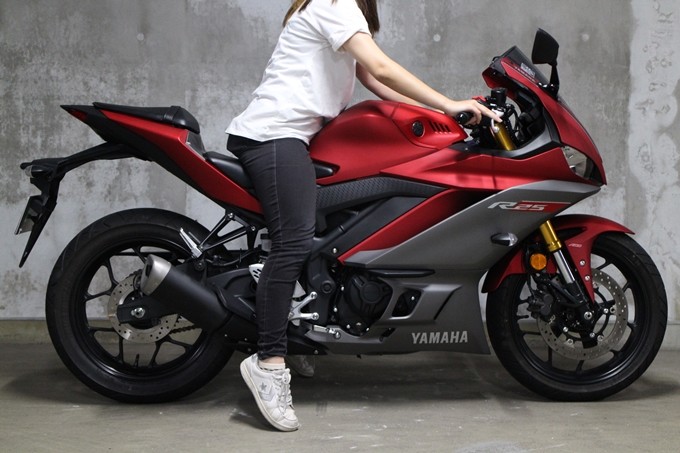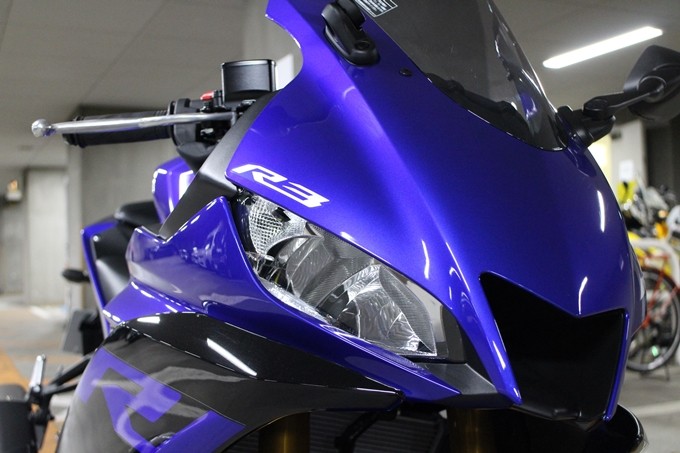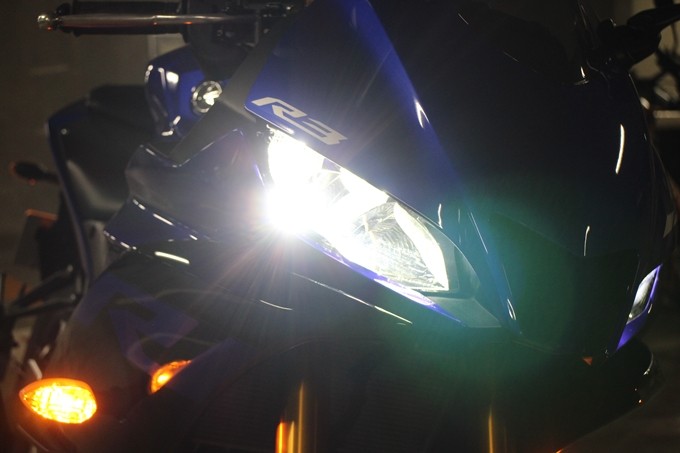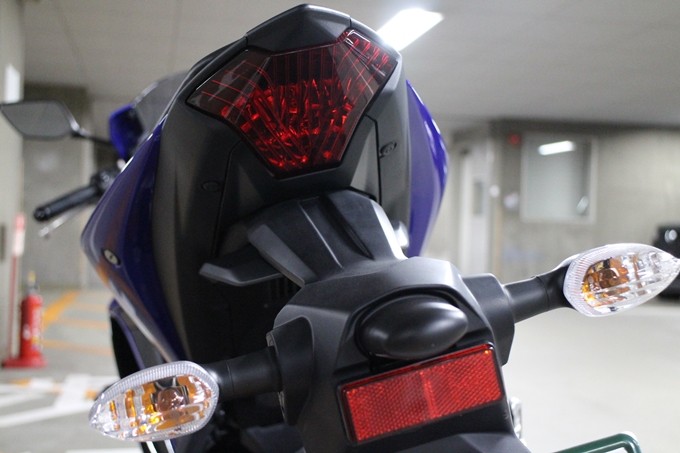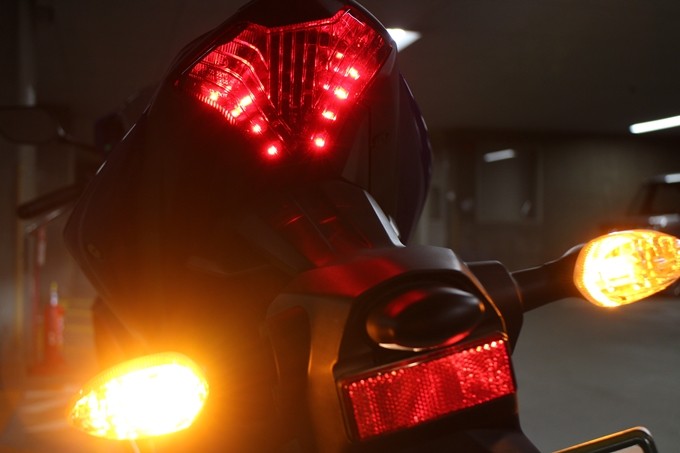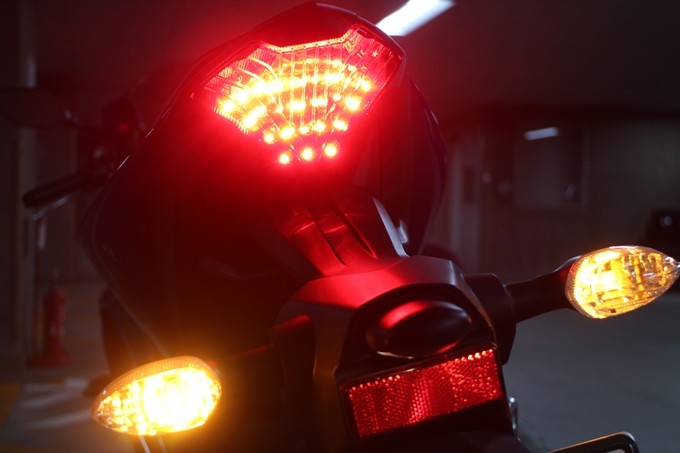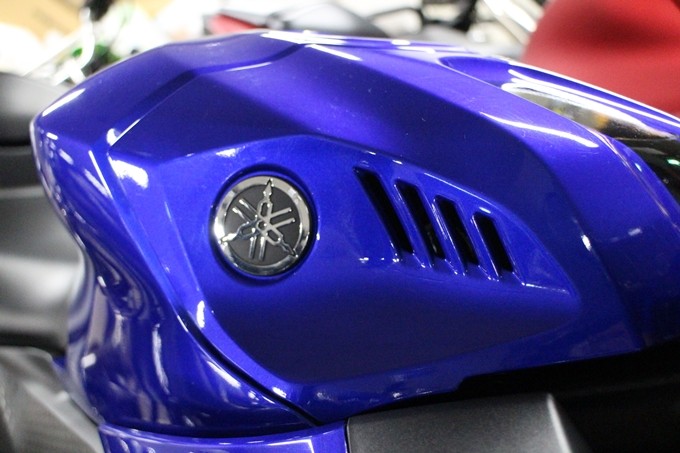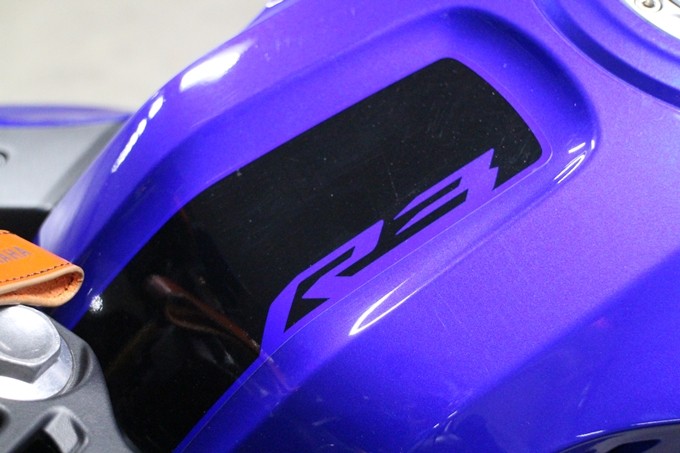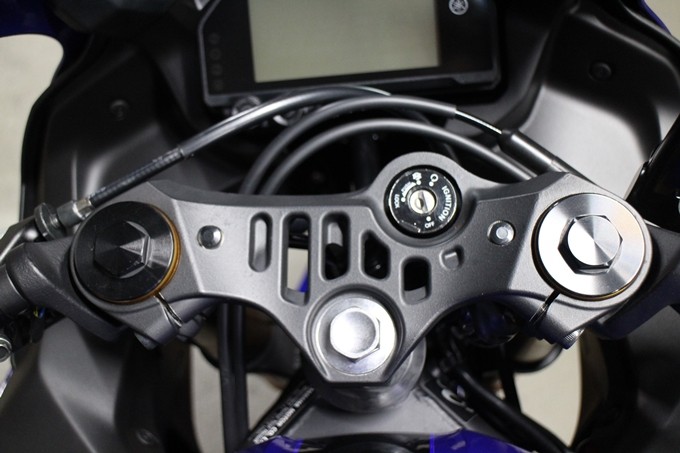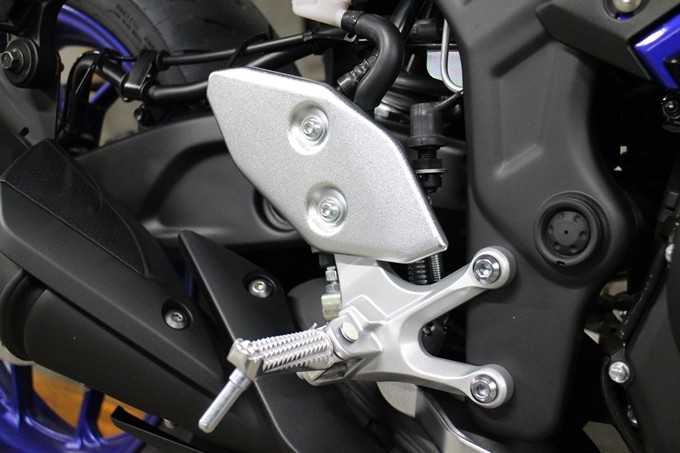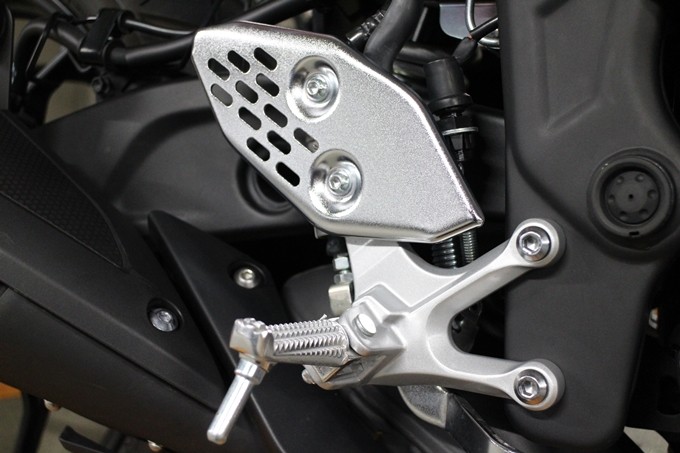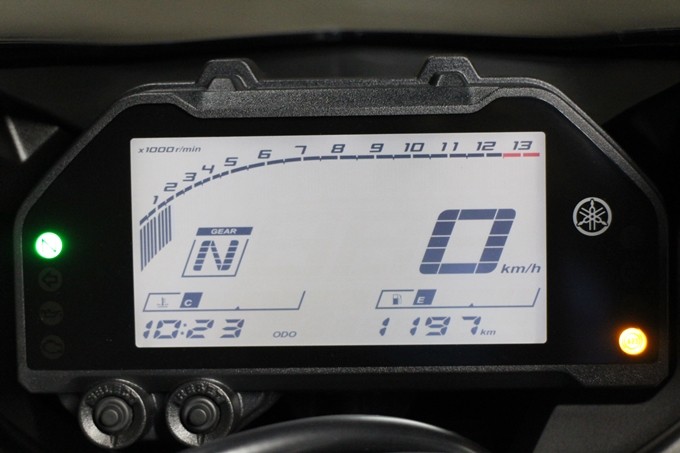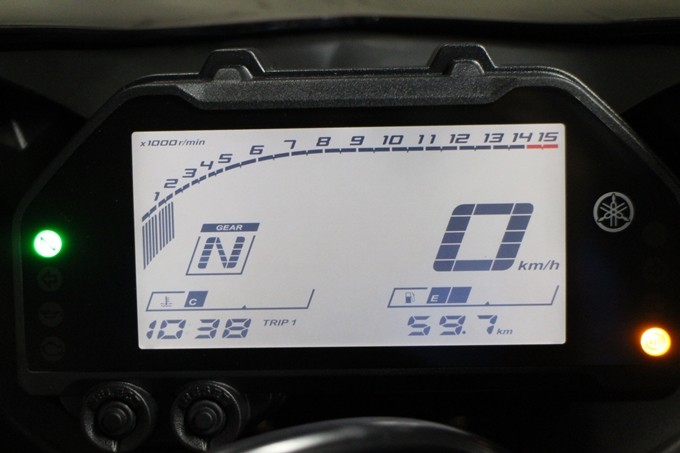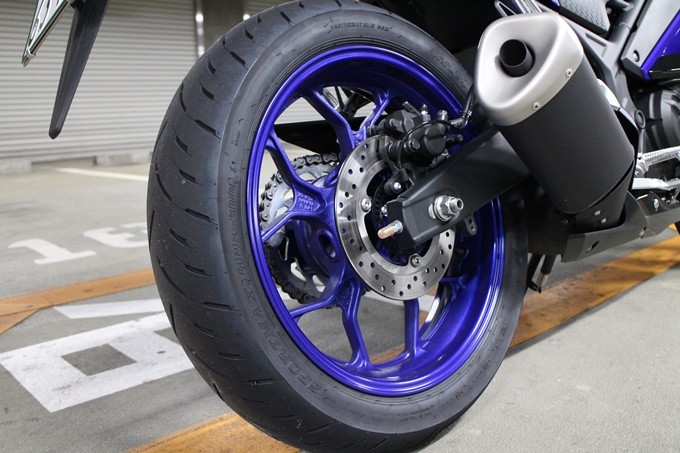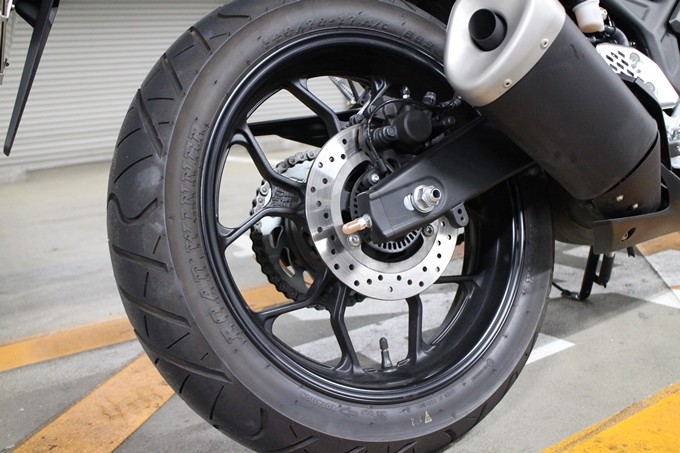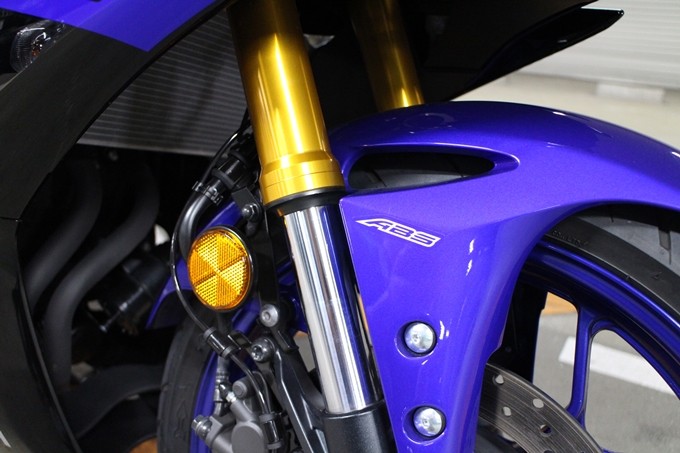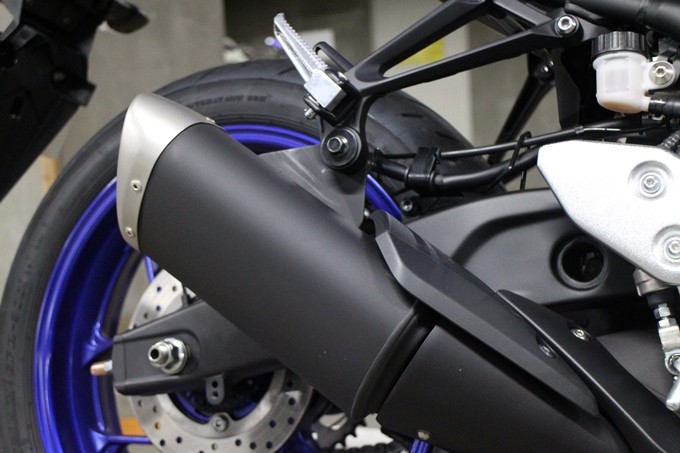- [YAMAHA YZF-R3]Details & Test Ride Reviews
- 1. Vehicle size and weight are equivalent to 250cc
- 2. Foot grounding
- 3. Sharp look LED headlight
- 4. Fuel tank that has become more racy
- 5. Eye-cathing top bridge
- 6. Different from R25! Step design
- 7. Different from R25! Meter display
- 8. Different from R25! Tires
- 9. Different from R25! Engine
- 10. What is the selling price concern?
- 11. Summary
[YAMAHA YZF-R3]Details & Test Ride Reviews
Following the new YZF-R25, we also tested to ride the new YZF-R3 that has gotten the minor changes. The R3 looks exactly the same as the R25, but there are actually many different parts. I will report the different parts of R25 and R3 together with the new R3 test ride review!
1. Vehicle size and weight are equivalent to 250cc
The cowl shape of the R3 is the same as the R25. The position varies depending on the color, but the difference is only the logo character of "R25" and "R3". The vehicle size and weight of the R3 are the same as the R25 (ABS).
Overall Dimensions [ L x W x H]
2,090mm/730mm/1,140mm
[Curb Weight]
170kg
2. Foot grounding
[Seat Height]
780mm
[Foot grounding]
The seat height of R3 is also the same as the R25. The engine displacement of the R3 is increasing, but the weight does not change, so it is unlikely that it will not be able to support even if foot grounding is slightly worse.
3. Sharp look LED headlight
The newly adopted LED dual headlights are glared eye designed and expresses more aggressive. At a glance, the M-shaped duct in the center may be like the intake port of the ram-air, but it plays the role of the radiator air intake. The tail light is LED as usual.
[Headlight]
[Tail light]
4. Fuel tank that has become more racy
Fuel Tank Capacity: 14L
The R3 has an LED taillight that is the same as the previous model. The R3 has the same duct in front of the fuel tank as the YZF-R1 fuel tank, moreover, a dent is provided to the fuel tank to make it easier for the rider to face down. The height of the fuel tank is lowered by 20mm compared with the previous model at the position of the top of the fuel tank cap.
5. Eye-cathing top bridge
The machining lightweight top bridge succeeded from the YZF-R1 is also adopted to the YZF-R3. Not only the design of the top bridge, but also the handlebar position has been changed. The handlebar position has also been changed from the upper mount of the top bridge of the previous model to the bottom mount of the top bridge when the R3 got a minor change. By that, the handlebar position has been lowered by 22mm.
6. Different from R25! Step design
It is a small difference, but only the step plate has slightly been changed. Although the step plate of the R3 has not been subjected to machining process, the R25 has been subjected to machine processing. Since the machining looks cooler, some owners of the R3 will be diverted this plate to their R3.
7. Different from R25! Meter display
Both the YZF-R3 and the YZF-R25 has been adopted a new full LCD meter. The basic display is the same, but the red line of the bar-type tachometer is different. The red line of the R3 is from 12,500rpm against the red line of the R25 is from 14,000rpm.
8. Different from R25! Tires
The YZF-R3 and YZF-R25 have different standard tires. The R3 is equipped with DUNLOP radial tires. The R25 is equipped with IRC bias tires. The R3 has been improved its nimble riding and handling performance from the street to the winding road by radial tires.
As for other undercarriage parts, the inverted front forks, wheel designs, and brake systems of the R3 are the same as the R25. The R25 has been set ABS version and non-ABS version. However, the R3 has only the ABS version.
9. Different from R25! Engine
Total Engine Displacement: 320cc
Maximum Output: 31kW (42ps) / 10,750rpm
Maximum Torque: 29N.m (3.0kgf.m) / 9,000rpm
The biggest difference between the YZF-R25 and the YZF-R3 is the equipped engine. The maximum output is increased from 35ps to 42ps with 7hp. Due to the changes in engine characteristics, the rotation speed of the red line has also changed from 14,000 to 12,500 for the YZF-R25. With the increased engine displacement, it is the impression that you can afford more in the engine that can be enjoyed in the whole aspects.
10. What is the selling price concern?
MSRP
4,999 USD
If you think that the tax-inclusive price of the YZF-R25 is around 5,500 USD, you can ride more comfortably with around 300 USD profit. However, since the 320cc is required for vehicle inspection, many people choose the YZF-R25 because of the increased maintenance costs.
11. Summary
I've been telling you the difference from YZF-R25, but "in short, only the engine displacement has increased, right?", thats it! However, because of the small engine displacement, even the difference of 70cc makes a big difference while riding.
I tried to test ride mainly for commuting and high speed cruises same as the YZF-R25, but the difference was obvious. With the increase engine displacement, the low-speed cruising has been made easier by the margin for low rotation range. When riding on the YZF-R25, the rotation speed will increase if you ride in a low gear and you will be concerned about vibration and engine noise. If you ride with high gears, the acceleration is slow at low rpm and changing gears frequently made a busy impression.
That is why the YZF-R3 has no need for frequent gear changes and is comfortable to use, because even if you ride the YZF-R3 with high gear, it will accelerate at low rpm. Even when cruising at high speed, I feel that it is 100km/h at 6,000rpm of 6-speed, which is also lower than the YZF-R25, and I feel that I can afford to ride.
Above all, the power is higher with the same body and weight as the 250cc class, which makes the winding a lot more fun, and the power-weight ratio is quite excellent. If the cost and effort of the vehicle inspection clearly do not become a negative factor, the YZF-R3 will be more fun and easier to ride. Since there are many common parts, it is also good that you do not have to worry about customizing.
If you are wondering which one to choose, it's a good idea to use the YZF-R25 for maintenance and cost, and YZF-R3 if you want to ride with enough space with 250cc. I would appreciate it if you could use this as reference.
YZF-R3 Main Specifications
| Certification Type / Engine Type | 2BL-RH13J / H405E | |
|---|---|---|
| Overall Dimension [L x W x H] | 2,090mm x 730mm x 1,140mm | |
| Seat Height | 780mm | |
| Wheelbase | 1,380mm | |
| Ground Clearance | 160mm | |
| Curb Weight | 170kg | |
| Fuel Consumption Rate*1 | Ministry of Land, Infrastructure, Transport and Tourism Fixed Fuel Consumption Value *2 |
41.3km / L (60km/h) When 2 people riding |
| WMTC Mode Value (Class)*3 | 27.6km / L (Class 3, Subclass 3-2) When 1 person riding | |
| Engine Type | Liquid-cooled 4-stroke DOHC 4-valve | |
| Engine Cylinder | Inline 2-cylinder | |
| Engine Displacement | 320cc | |
| Bore x Stroke | 68.0mm x 44.1mm | |
| Compression Ratio | 11.2:1 | |
| Maximum Output | 31kW (42ps) / 10,750rpm | |
| Maximum Torque | 29N.m (3.0kgf.m) / 9,000rpm | |
| Starting System | Self Starter | |
| Lubrication System | Wet Sump | |
| Engine Oil Capacity | 2.40L | |
| Fuel Tank Capacity | 14L (designated as "unleaded regular gasoline") | |
| Fuel Supply System | Fuel Injection | |
| Ignition System | TCI (Transistor Controlled Ignition) | |
| Battery Capacity / Type | 12V, 7.0Ah (10HR) / GTZ8V | |
| Primary Reduction Ratio / Secondary Reduction Ratio | 3.043 (70/23) / 3.071 (43/14) | |
| Clutch Type | Wet, Multiplate | |
| Transmission / Gear Shift Type | Constant Mesh 6-speed / Return | |
| Gear Ratio | 1st gear: 2.500, 2nd gear: 1.823, 33rd gear: 1.347, 4th gear: 1.086, 5th gear: 0.920, 6th gear: 0.800 | |
| Frame | Diamond | |
| Caster / Trail | 25-degree / 95mm | |
| Tire Size | Front: 110/70R17M/C 54H, Rear: 140/70R17M/C 66H (Front & Rear Tubeless) | |
| Braking System | Front: Hydraulic Single Disc Brake, Rear: Hydraulic Single Disc Brake | |
| Suspension | Front: Telescopic, Rear: Swingarm | |
| Headlamp Valve Type / Headlamp | LED / LED | |
*1: The fuel consumption rate is the value under the specified test conditions. It depends on various conditions such as the use environment (weather, traffic jam, etc.), driving method, vehicle condition (equipment, specification) and maintenance conditions.
*2: The fixed fuel consumption value is the fuel consumption rate measured at a constant vehicle speed.
*3: The WMTC mode value is a calculated value based on the emission test results measured in riding mode, which is an international standard, including starting, acceleration, and stopping. The class of riding mode is classified by the engine displacement and maximum speed.
Original Source [ YAMAHA ]
See Accessories of DUNLOP
See Accessories of IRC
See Accessories for YAMAHA YZF-R1 (R1)
See Accessories for YAMAHA YZF-R25 (R25)
See Accessories for YAMAHA YZF-R3 (R3)


